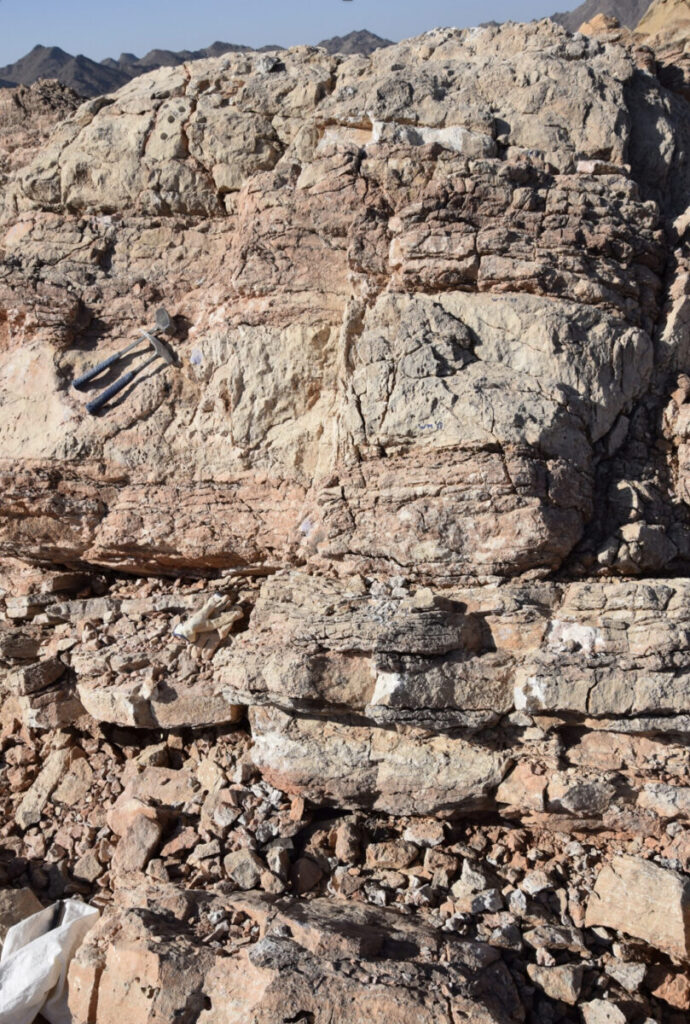Cette publication est également disponible en :
![]() Français
Français

Thesis defended by Oluwaseun Edward, November 29, 2023 – Institute of Earth Surface Dynamics (IGD).
Studying historical marine environmental and climate changes is important for predicting future changes and improving our understanding of how quickly they would occur, as well as their spatial distribution. This thesis focuses on marine environmental changes connected to the mass extinction of animals in the oceans between the end of the Permian Period 252 million years ago (Ma), and during the Early Triassic Period (251.2 Ma – 247.2 Ma). Although still being discussed by scientists, changes in the environment and climate during this time are often linked to massive volcanic activity during the formation of the Siberian Traps Large Igneous Province (STLIP).
The aim of this research is to further the understanding of what caused the changes in the marine environment, when exactly the changes happened, and how these changes affected life in the oceans. This thesis approaches this aim by discussing the following 3 points:
- the timing and origin of volcanic activity during the end of the Permian and beginning of the Triassic,
- how oxygen availability in the oceans changed during the Early Triassic,
- how ocean temperatures varied during the Early Triassic.
For this research, records of different elements found in sedimentary rocks that were deposited in the oceans between 252 Ma and 247.2 Ma, but which can be found today in South China and Oman are used. We can use these records because the abundance and isotopic composition of chemical elements usually change due to different physical, chemical, or biological processes in the environment. Therefore, because we know which processes will change these elemental and isotopic records, and what direction this change will take (i.e., increase or decrease), we can use the changes to interpret what processes were happening in the oceans at the time that the rocks were formed. For example, the abundance and isotopic composition of mercury (Hg) measured in sedimentary rocks can be used to trace the occurrence and source of volcanic activity. Also, sulfur (S) and oxygen (O) isotope compositions of sulfate found in carbonate rocks can be used to trace the availability of oxygen in ancient oceans.
The results from this thesis show that frequent and long periods of volcanic activity at the end of the Permian Period occurred only after the mass extinction of animals in the oceans and that these volcanic eruptions were from volcanoes that were more nearby than the Siberian Traps. Also, the results show that there is no reliable evidence that STLIP volcanism was the reason for changes in the oceans during the period of the Early Triassic that was studied. In addition, oxygen contents in the oceans kept decreasing in the Early Triassic between 250.4 Ma and 249.3 Ma. However, during this time, the diversity of animals in the oceans decreased sometimes but increased at other times. Also, seawater temperatures both increased and decreased over this period.
From these results, it is concluded that volcanic activity from more nearby volcanoes in the studied area was more influential in causing marine environmental changes during the time interval studied than was previously thought. Furthermore, the variations in the diversity of marine animals were probably not only controlled by oxygen content of the oceans and changes in the temperature of seawater. Therefore, more research needs to be conducted to determine the main factor that controlled the abundance and diversification of marine animals during the Early Triassic.


